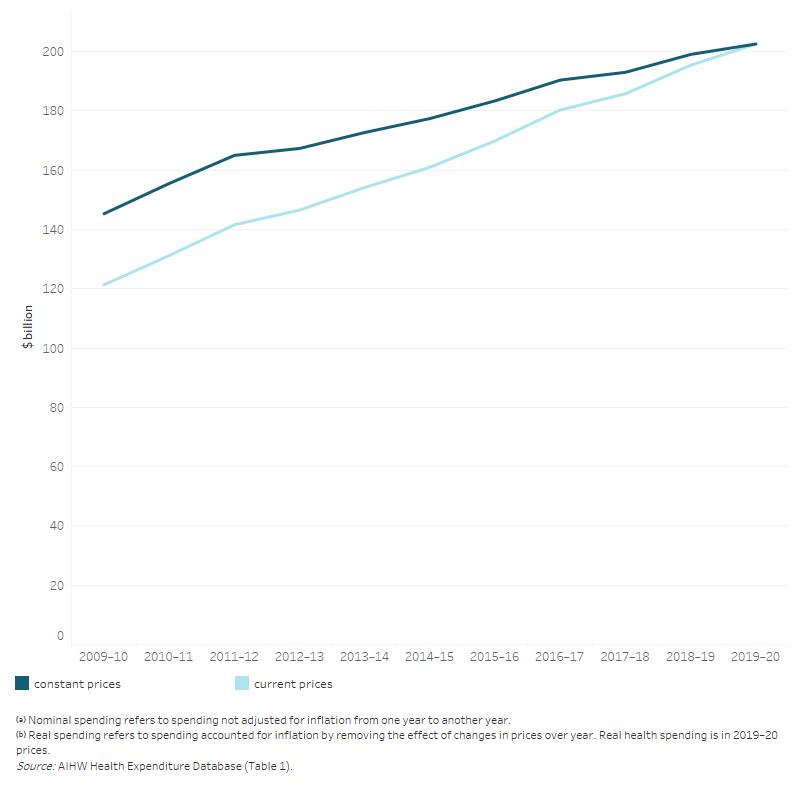Total health spending
Estimates for total health spending capture the national aggregate of all spending on health goods and services for recurrent and capital purposes.
In 2019–20, Australia spent an estimated $202.5 billion on health. In real terms, this represented a 1.8% growth in spending from 2018–19, equating to an additional $3.5 billion (Figure 1). This real growth was lower than in 2018–19 (3.1%), higher than in 2017–18 (1.4%), but below the average of the recent 5-year period (2.7%), and below the average over the decade from 2009–10 (3.4%).
The main areas in which spending increased were:
- public hospitals, by $3.0 billion (noting that this is the current estimates, not taking into account some in-hospital MBS and PBS spending which is currently allocated to other areas, as detailed later in this report)
- unreferred medical services, by $0.7 billion
- benefit-paid pharmaceuticals, by $0.7 billion
- public health, by $0.7 billion.
Estimated spending on some other areas declined, including:
- dental services, by $0.8 billion
- private hospitals, by $0.6 billion
- other health practitioners, by $0.5 billion.
The areas of declining spending were most likely related to the lockdowns, restrictions and temporary suspension of non-urgent elective surgery in the first half year of the COVID-19 pandemic in Australia.
Figure 1: Nominal(a) and real(b) total health expenditure, 2009–10 to 2019–20
The line graph shows that total health spending in both current and constant prices increased each year from 2009–10 to 2019–20. Total health spending in current prices increased from $121.3 billion in 2009–10 to $202.5 billion in 2019–20. In the same period, total health spending in constant prices increased from $145.3 billion to $202.5 billion.

Government’s COVID-19 health response
Following the Novel Coronavirus (COVID-19) pandemic in late February 2020, the Australian Government entered a National Partnership Agreement – the National Partnership on COVID-19 response (NPCR) with state and territory governments. This agreement aims to provide financial assistance for the additional costs incurred by state and territory health services in responding to the COVID-19 outbreak, and efforts to minimise the spread of COVID-19 in the Australian community.
This agreement has three funding arrangements in 2019–20: (1) Hospital Services Payments, (2) State Public Health Payments, and (3) Private Hospital Financial Viability Payment.
In addition governments implemented a range of policies and programs in response to the COVID-19 pandemic, including specialised testing facilities, Medicare-subsidised telehealth services, GP-led respiratory clinics, distribution of large volumes of personal protective equipment (PPE) to health systems and increased mental health counselling.


